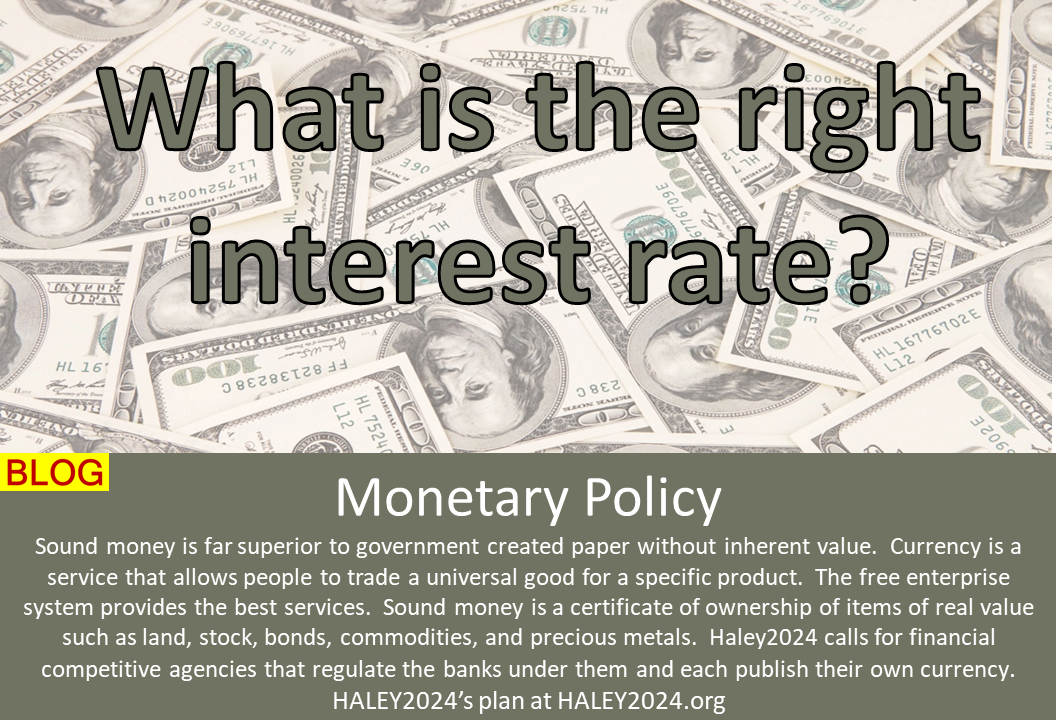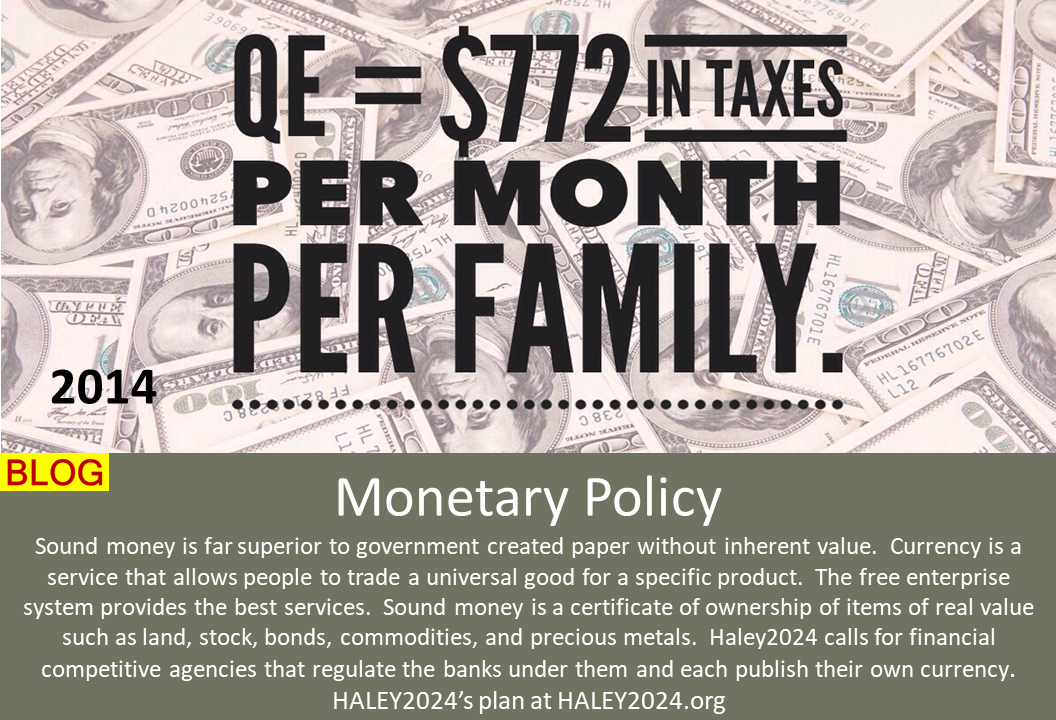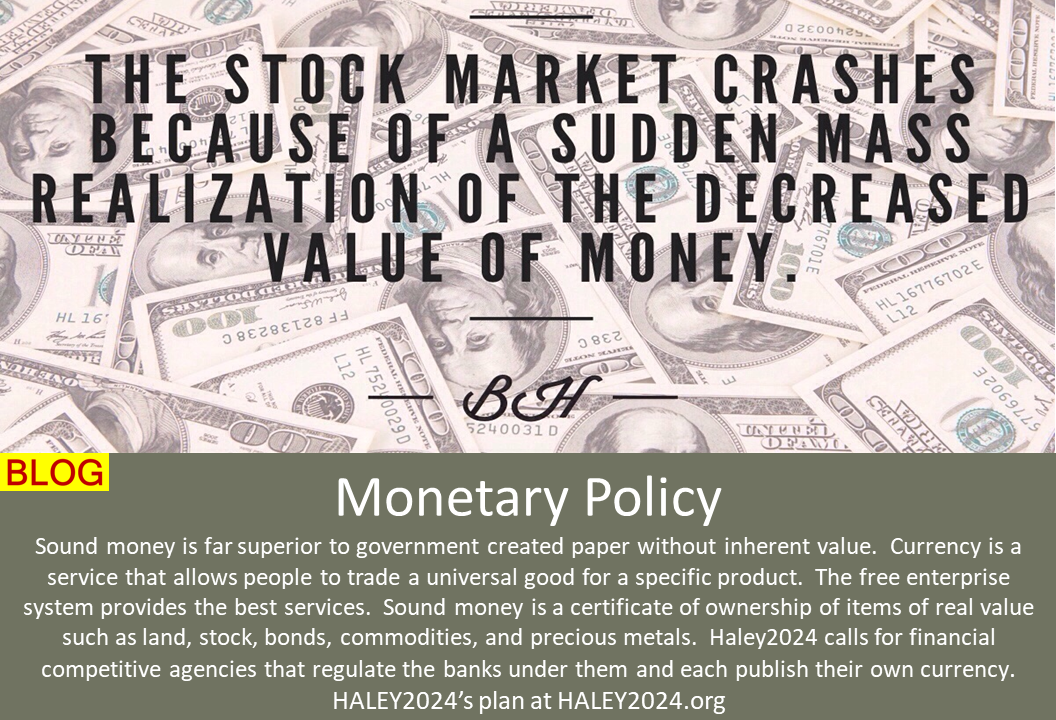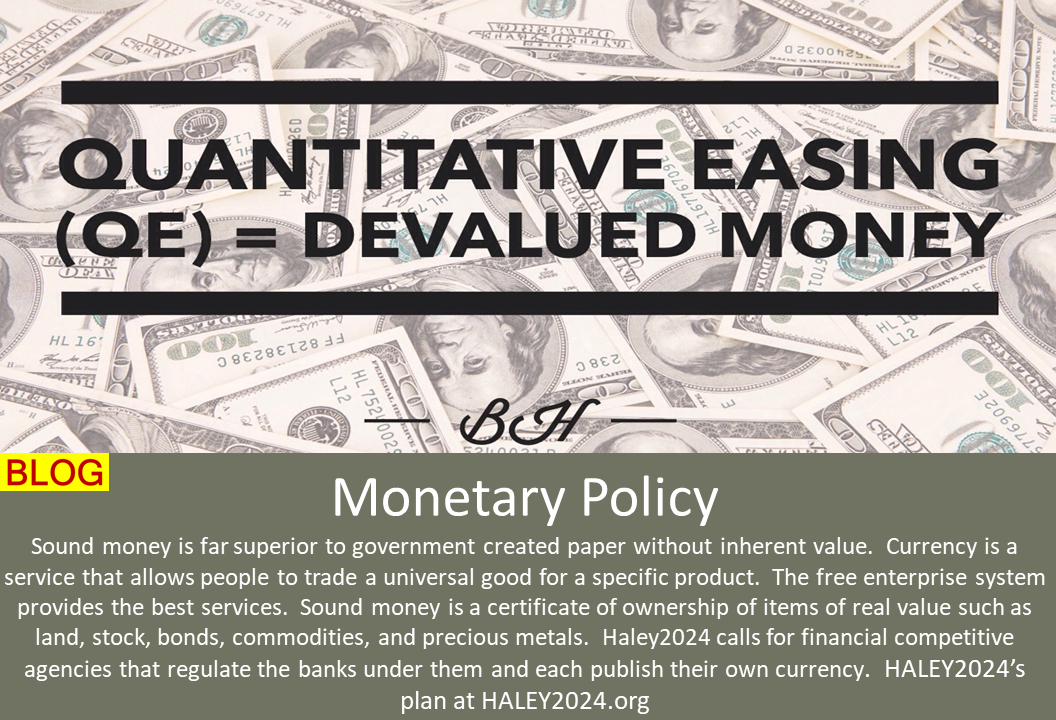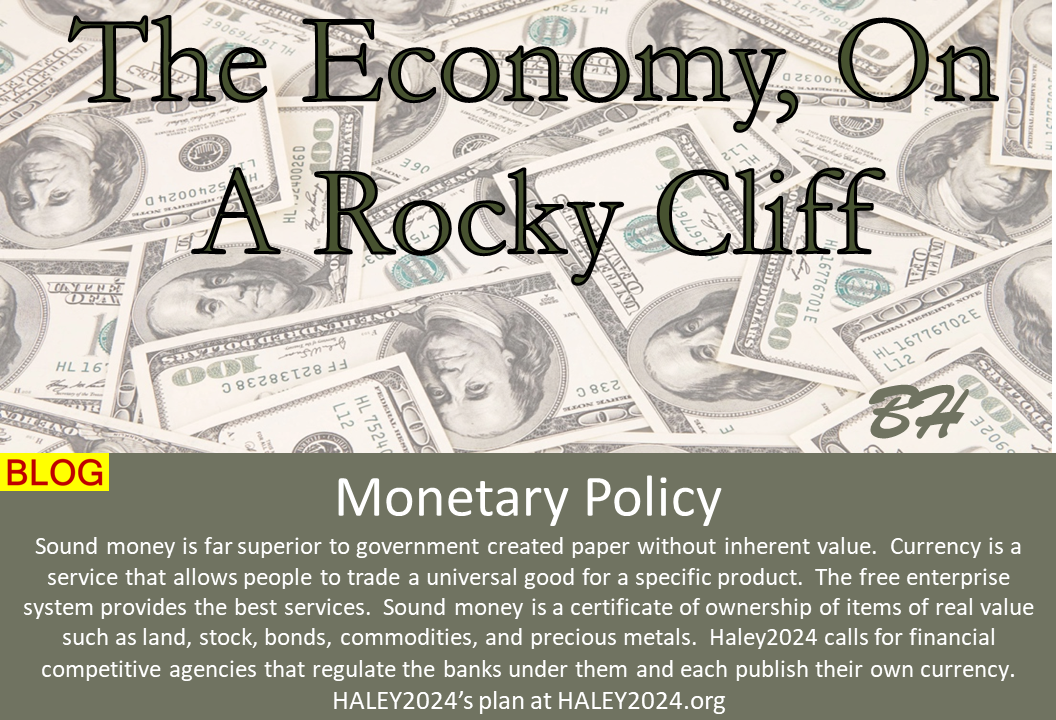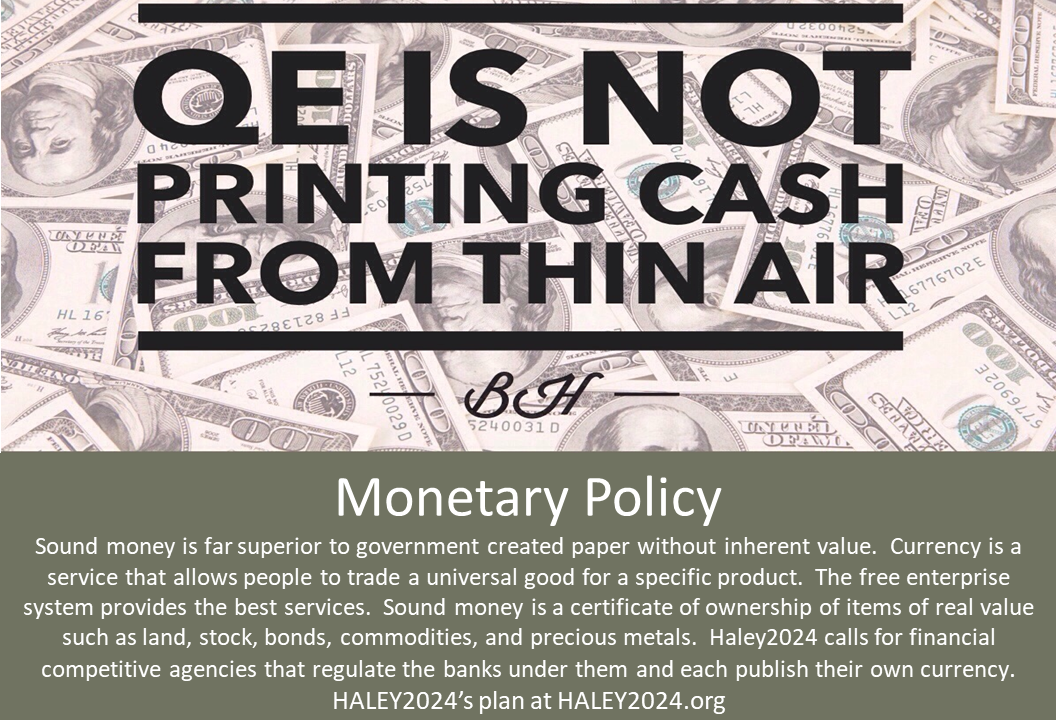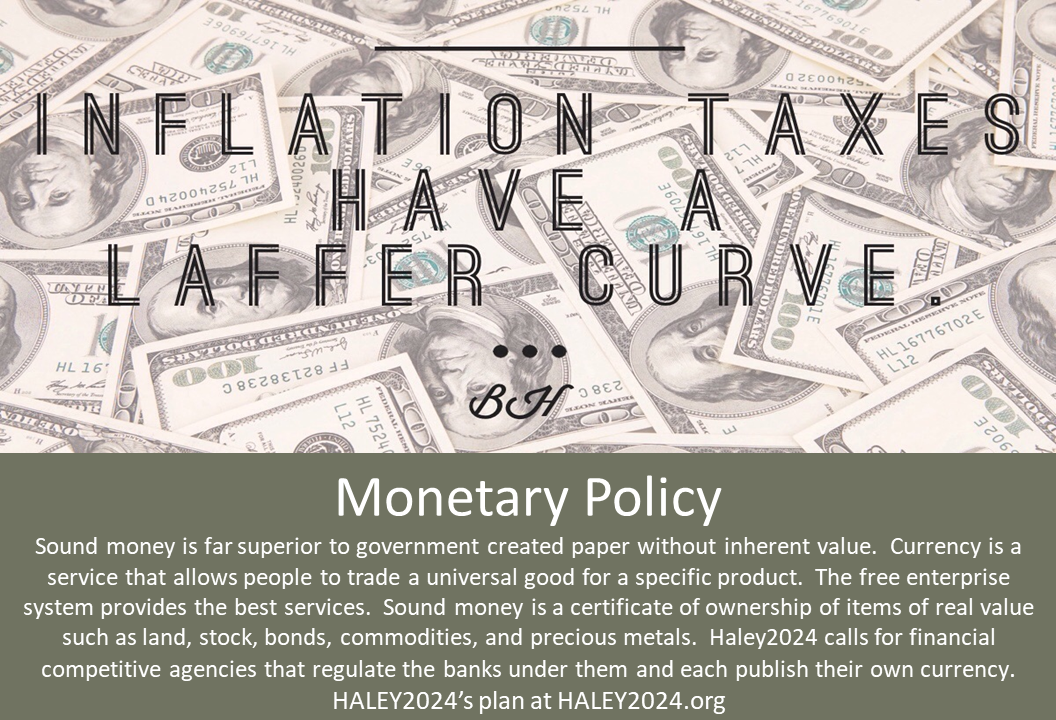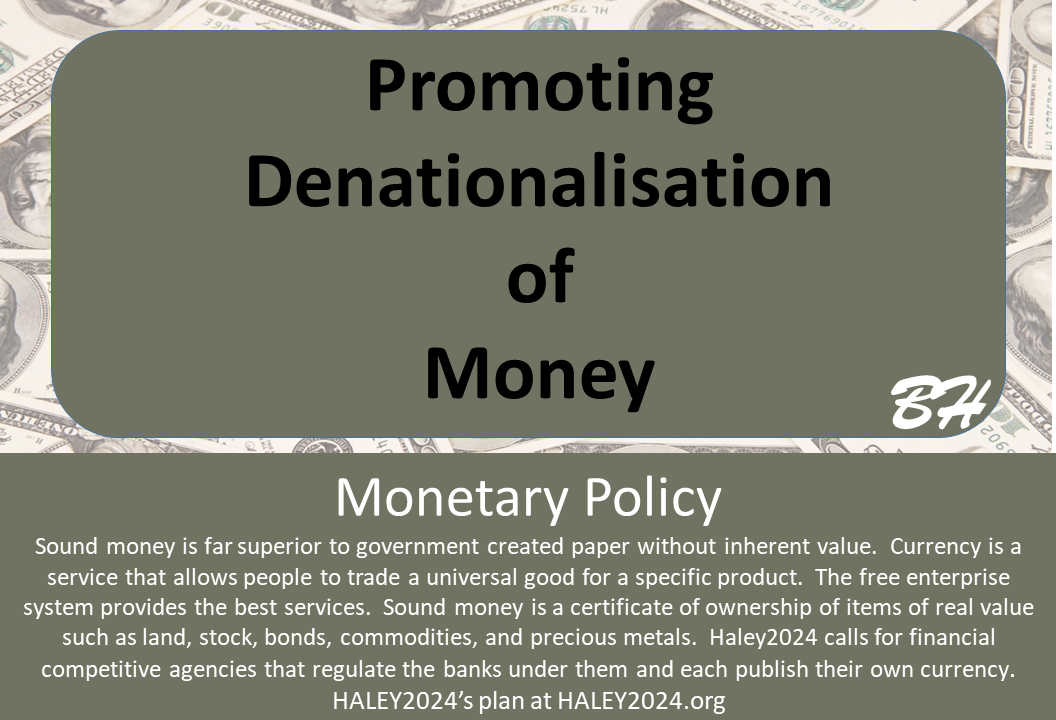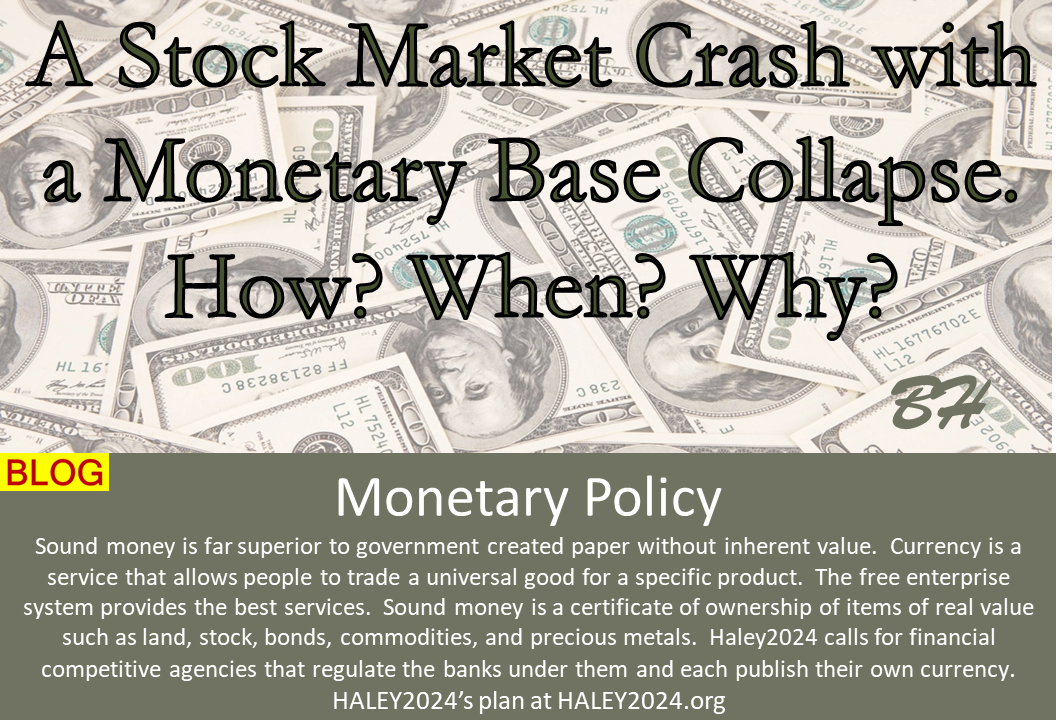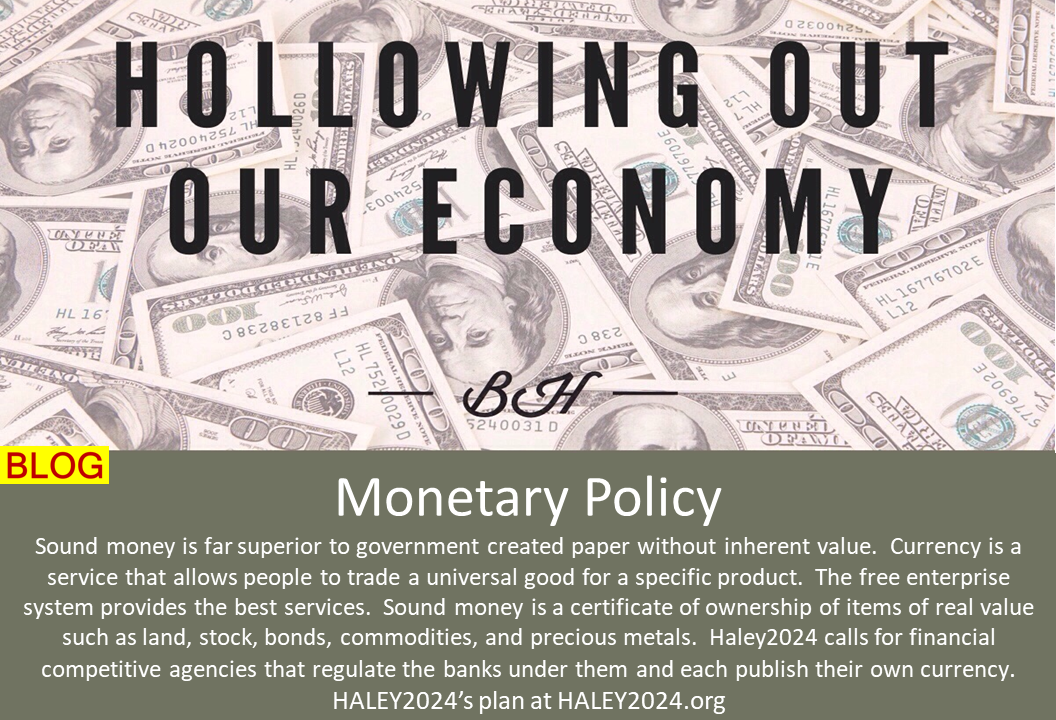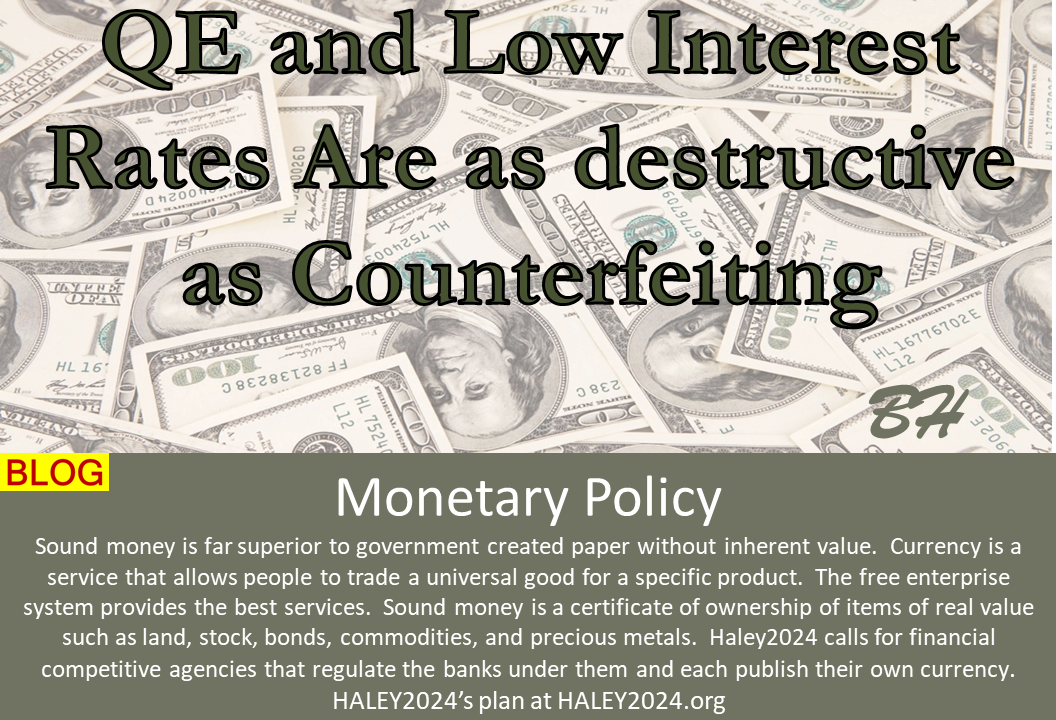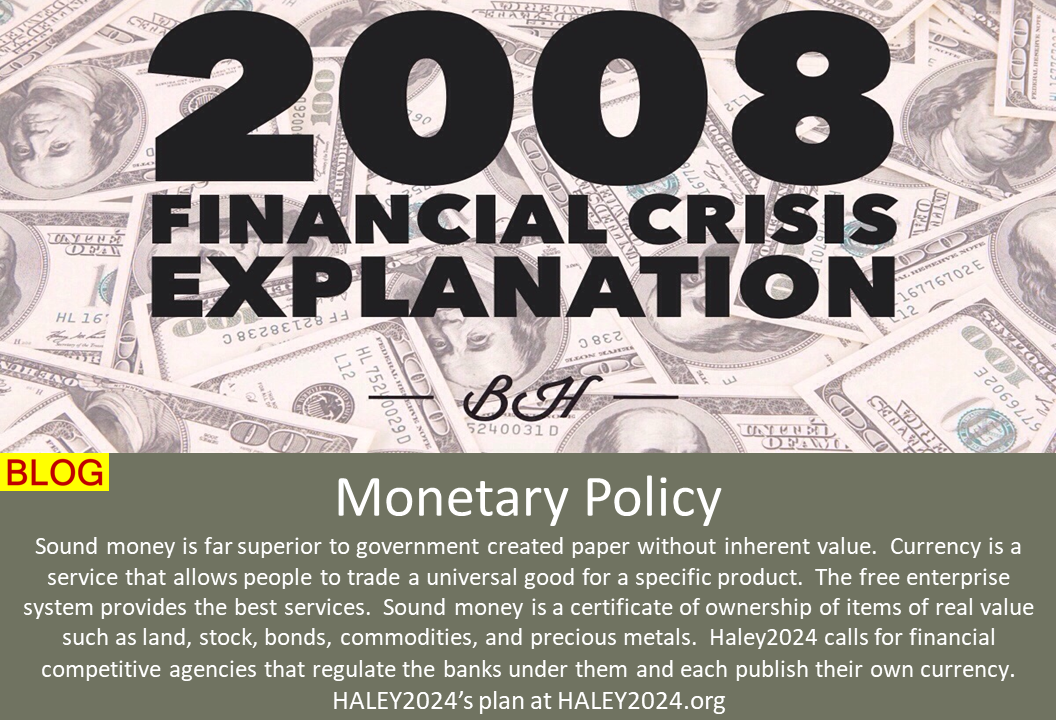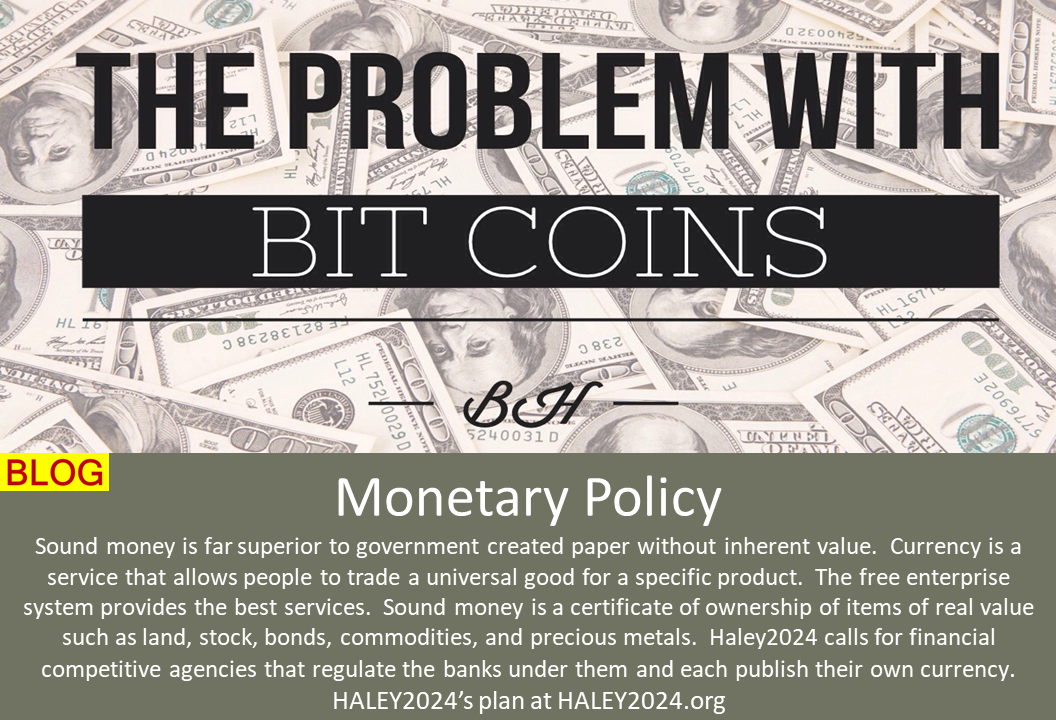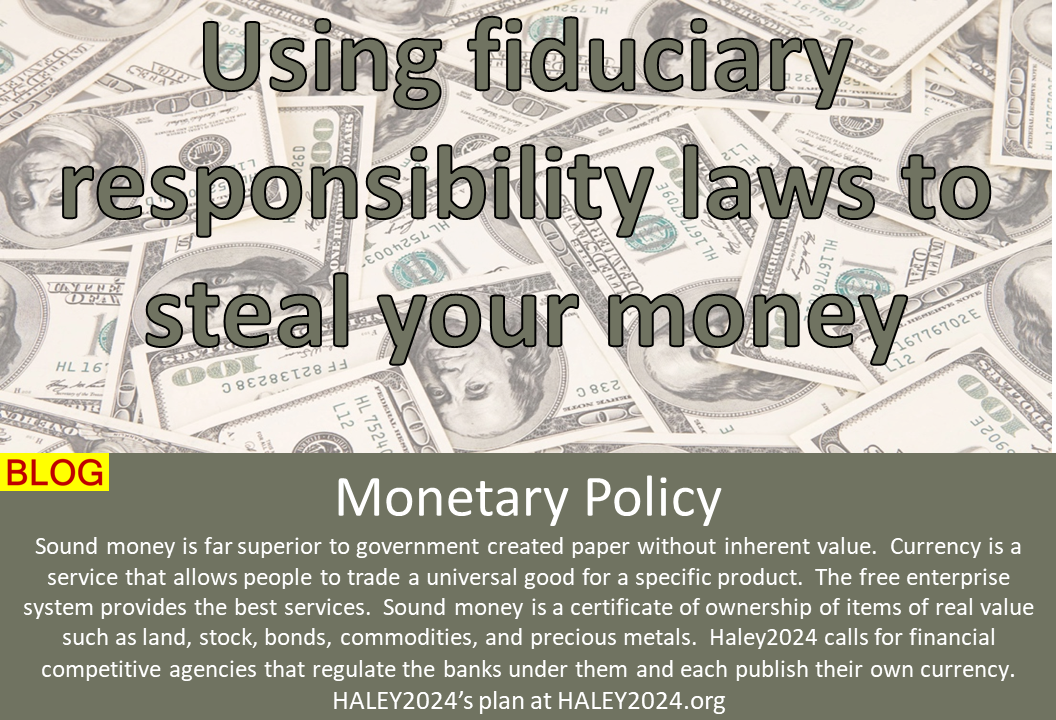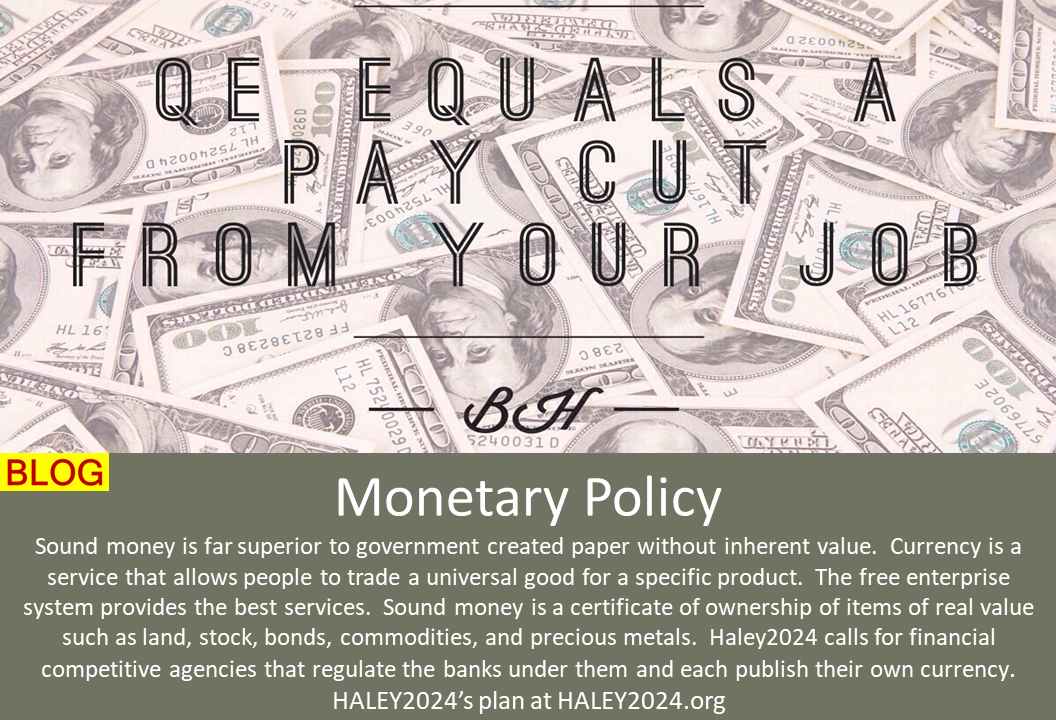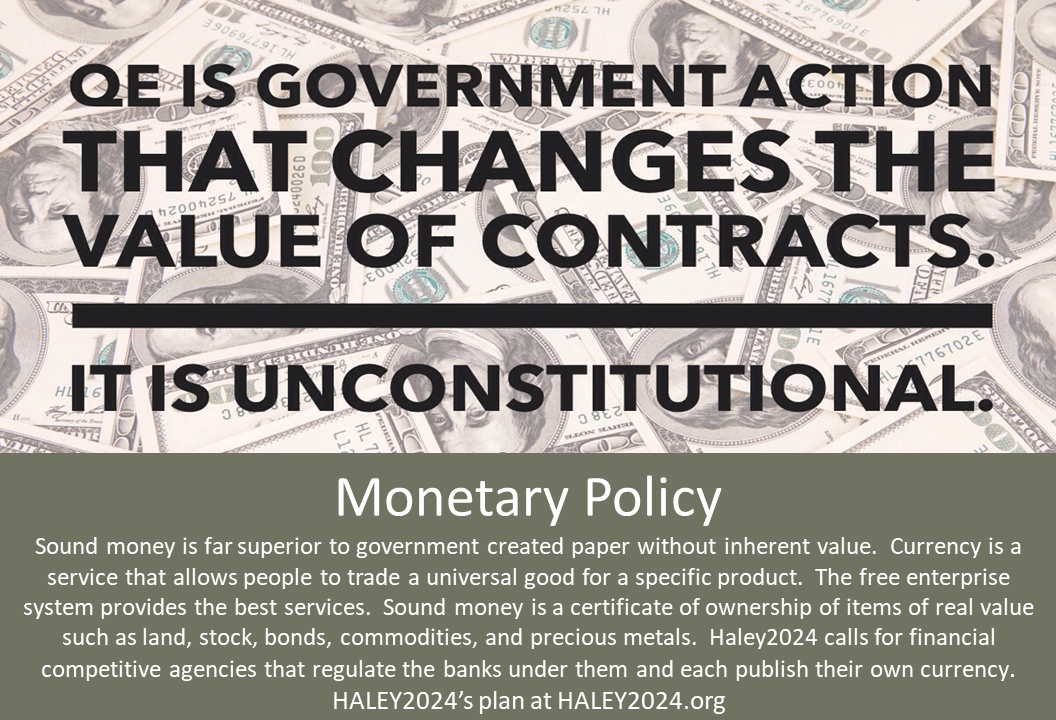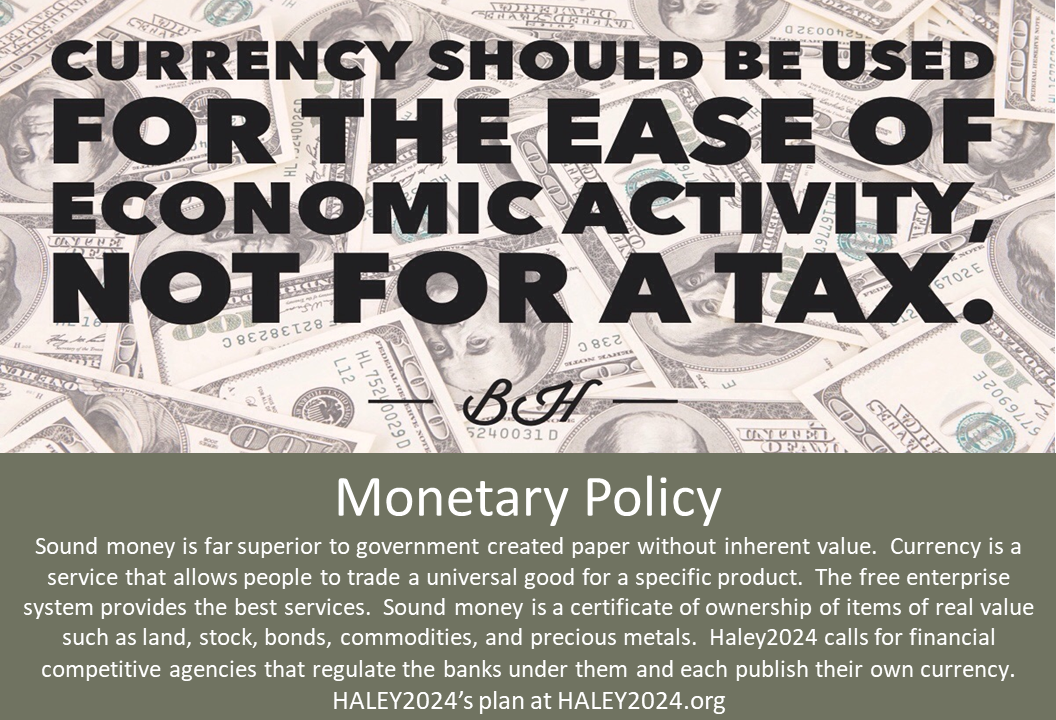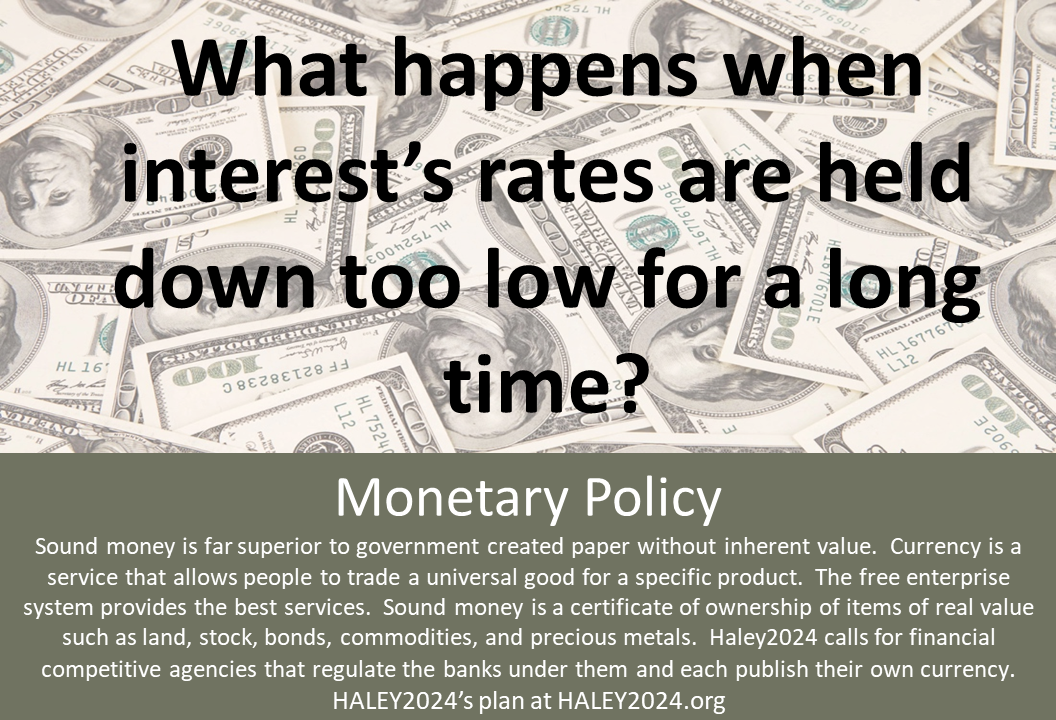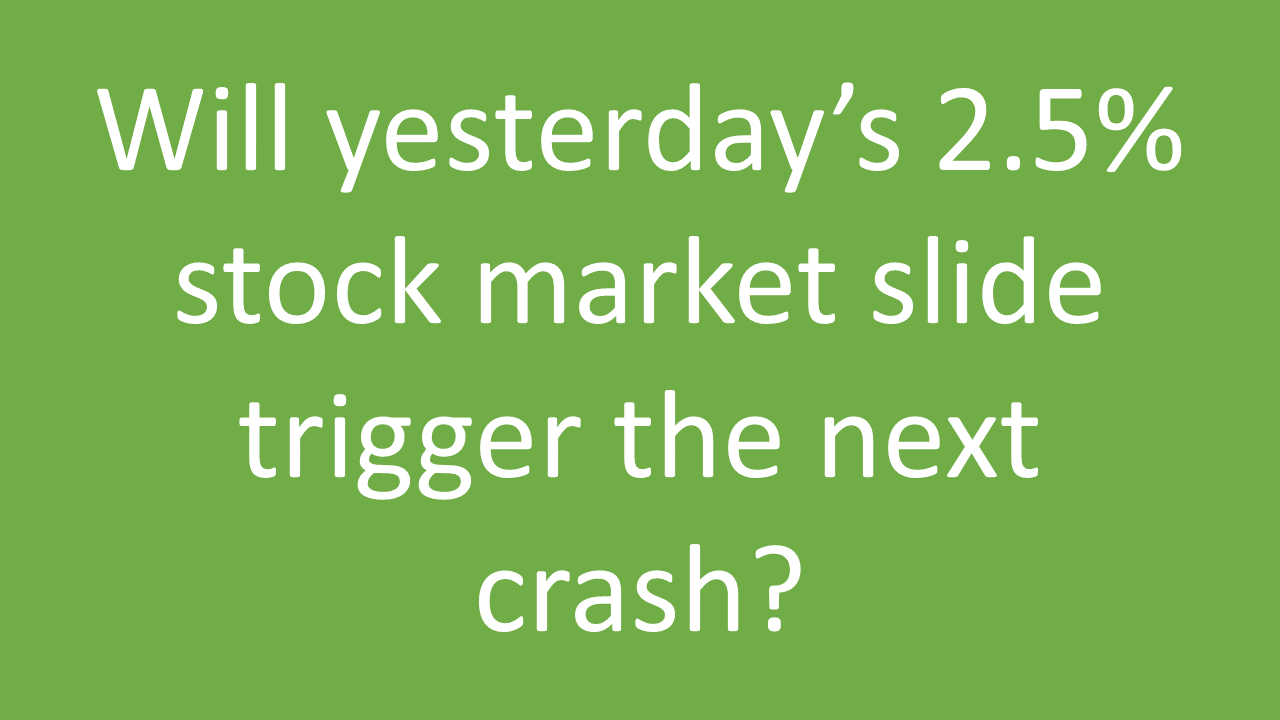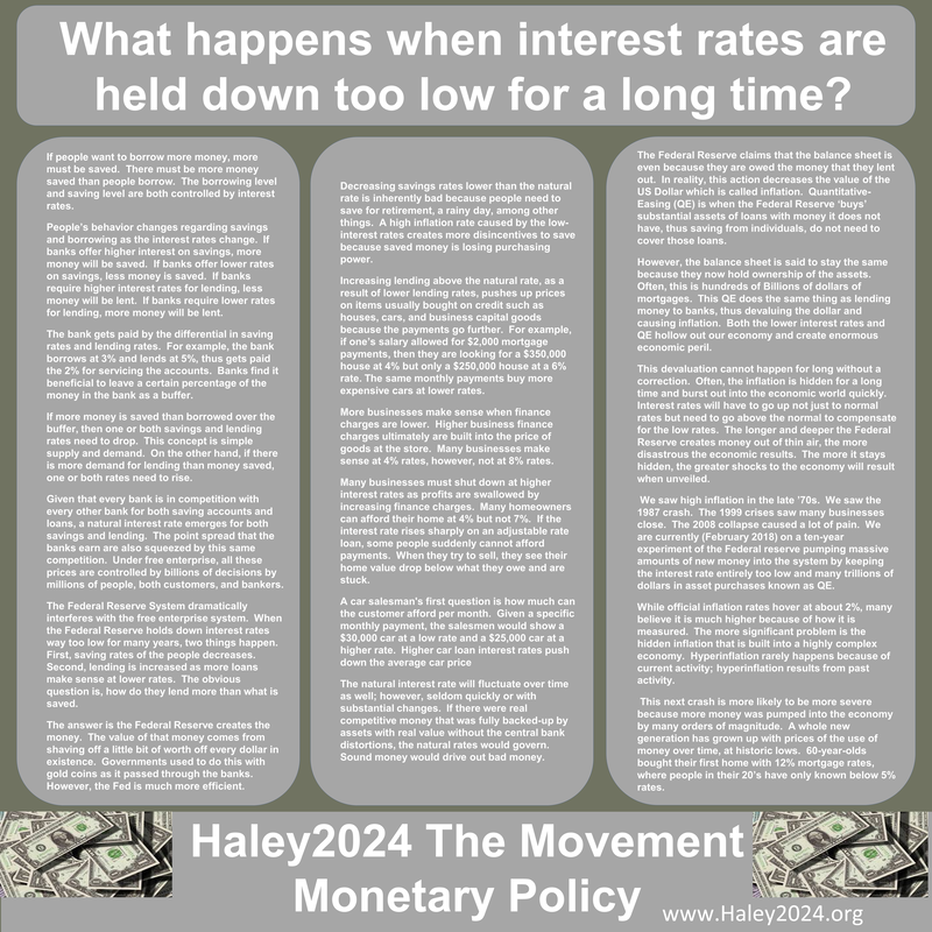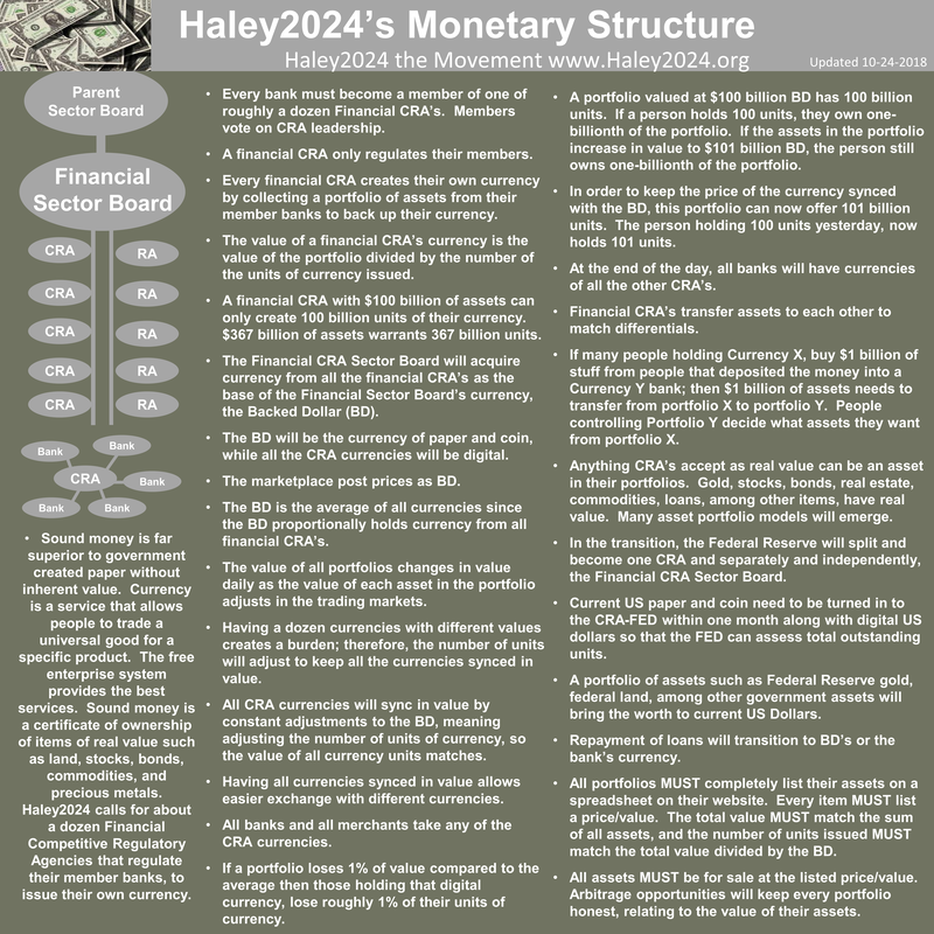| People’s behavior changes regarding savings and borrowing as the interest rates change. If banks offer higher interest on savings, more money will be saved. If banks offer lower rates on savings, less money is saved. If banks require higher interest rates for lending, less money will be lent. If banks require lower rates for lending, more money will be lent. |
| Given that every bank is in competition with every other bank for both saving accounts and loans, a natural interest rate emerges for both savings and lending. The point spread that the banks earn are also squeezed by this same competition. Under free enterprise, all these prices are controlled by billions of decisions by millions of people, both customers, and bankers. |
| The Federal Reserve System dramatically interferes with the free enterprise system. When the Federal Reserve holds down interest rates way too low for many years, two things happen. First, saving rates of the people decreases. Second, lending is increased as more loans make sense at lower rates. The obvious question is, how do they lend more than what is saved. |
| Increasing lending above the natural rate, as a result of lower lending rates, pushes up prices on items usually bought on credit such as houses, cars, and business capital goods because the payments go further. For example, if one’s salary allowed for $2,000 mortgage payments, then they are looking for a $350,000 house at 4% but only a $250,000 house at a 6% rate. The same monthly payments buy more expensive cars at lower rates. |
| Many businesses must shut down at higher interest rates as profits are swallowed by increasing finance charges. Many homeowners can afford their home at 4% but not 7%. If the interest rate rises sharply on an adjustable rate loan, some people suddenly cannot afford payments. When they try to sell, they see their home value drop below what they owe and are stuck. |
| A car salesman's first question is how much can the customer afford per month. Given a specific monthly payment, the salesmen would show a $30,000 car at a low rate and a $25,000 car at a higher rate. Higher car loan interest rates push down the average car price. The natural interest rate will fluctuate over time as well; however, seldom quickly or with substantial changes. If there were real competitive money that was fully backed-up by assets with real value without the central bank distortions, the natural rates would govern. Sound money would drive out bad money. |
| The Federal Reserve claims that the balance sheet is even because they are owed the money that they lent out. In reality, this action decreases the value of the US Dollar which is called inflation. Quantitative-Easing (QE) is when the Federal Reserve ‘buys’ substantial assets of loans with money it does not have, thus saving from individuals, do not need to cover those loans. |
| However, the balance sheet is said to stay the same because they now hold ownership of the assets. Often, this is hundreds of Billions of dollars of mortgages. This QE does the same thing as lending money to banks, thus devaluing the dollar and causing inflation. Both the lower interest rates and QE hollow out our economy and create enormous economic peril. |
| This devaluation cannot happen for long without a correction. Often, the inflation is hidden for a long time and burst out into the economic world quickly. Interest rates will have to go up not just to normal rates but need to go above the normal to compensate for the low rates. The longer and deeper the Federal Reserve creates money out of thin air, the more disastrous the economic results. The more it stays hidden, the greater shocks to the economy will result when unveiled. |
| We saw high inflation in the late 70’s. We saw the 1987 crash. The 1999 crises saw many businesses close. The 2008 collapse caused a lot of pain. We are currently (Februarys 2018) on a ten-year experiment of the Federal reserve pumping massive amounts of new money into the system by keeping the interest rate entirely too low and many trillions of dollars in asset purchases known as QE. |
| While official inflation rates hover at about 2%, many believe it is much higher because of how it is measured. The more significant problem is the hidden inflation that is built into a highly complex economy. Hyperinflation rarely happens because of current activity; hyperinflation results from past activity. |
| This next crash is more likely to be more severe because more money was pumped into the economy by many orders of magnitude. A whole new generation has grown up with prices of the use of money over time, at historic lows. 60-year-olds bought their first home with 12% mortgage rates, where people in their 20’s have only known below 5% rates. |
